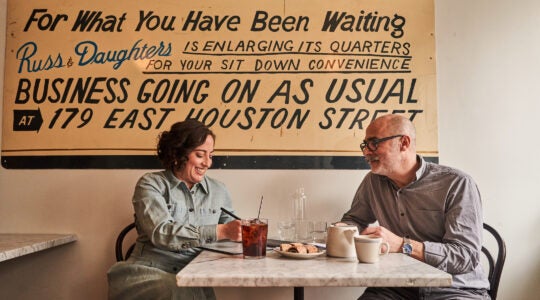Probably my favorite subgenre of literature is that of "the walker in the city," books in which people saunter or stroll through New York City, experiencing themselves changing and growing as they come to understand the physical and metaphysical infrastructure of New York. Among my favorites of these books are Henry Roth’s "Call it Sleep," Alfred Kazin’s "A Walker in the City," and the collected comic strips of Ben Katchor.
I thought about these books after recently returning from a trip to New York to read from my novel-in-progress, in which a teenager travels the city in search of spiritual transformation. I spent several days "walking" the novel, tracing the characters’ steps as they hoof it from the West 80s up to the Jewish Theological Seminary, or from Soho to Washington Square Park, or in and around Washington Heights. After a week I realized that New York, in its almost organic complexity, is a text that tutors all those who walk its concrete pages. The city is alive, packed with meaning the way that only a book can be. The stories of the city become the stories of its citizens; the city is read as much as it is lived.
The only other place with the same resonance, at least for Jews, is Jerusalem, where every stone is a kind of palimpsest, recording story after story, generation after generation, until just to hold one in your hand is to take part in a conversation among Israelites, Romans, Christians, Muslims, and now Israelis and Palestinians.
This conflation of stone and story is at the heart of Ben Katchor’s comic series, including stand-alone books like "Julius Knipl, Real Estate Photographer: The Beauty Supply District." His panels portray mostly failing middle-aged businessmen exploring and cataloguing an unnamed but unmistakable New York. His city is dark, its buildings pockmarked with rich and symbolic names like "Incorporeal Funeral Home, Inc." and "Aorta Brothers Appliances." These names evoke the quirky melancholy of the city’s citizens, indicating that the human and the concrete are inseparable, interconnected, symbiotic. There is almost a Talmudic complexity to his work, with his characters, often paired up chevruta-style, commenting on building names or real estate announcements with the combination of awe and intimacy one would normally associate with scholars excavating the meaning of Mishna and Gemarah.
Although my teen protagonist doesn’t quite see mystical meaning in an elevator inspection notice, as a Katchor character conceivably might, he does start to understand how books, history and the architecture of the city are interconnected. When he learns, for instance, that the library of JTS almost burned down when he was a young child, with thousands of books lost to fire and water damage, he begins to think about all the Jews who were burned to death throughout history because they believed in those books. The library becomes for him a holy place.
I thought of this on the last day of my trip when I went to see the remains of the World Trade Center, a newly sacred place where fire claimed thousands of human books-in-progress. Before becoming a witness to that event, I walked around the observation area, reading the poems and cards enveloping the firehouse on Liberty Street, the church across the street and other nearby walls no longer safeguarding functioning businesses. If those soaring buildings had represented the "highest" aspirations of the city, the story of our desire to recreate the world in our capitalist image, the gaping hole that now remains reflects the subconscious of the city, the place where our most primal fears have laid themselves bare. Looking down into that six-story pit one is struck, mostly, by our fear of what can happen in the world, and our rage at those who make those things happen.
This collective sense of New York as a vast living library was deepened by the events of Sept. 11. The title of a new anthology of writing about that day, "110 Stories: New York Writes after September 11," explicitly makes the point that every floor of those buildings, poetically speaking, represented a person, with all of their hopes and dreams pulverized as if they were steel and cement. Two-thousand, eight-hundred and thirty manuscripts will never be completed, while the metal beams that were their bookshelf are now buried in the Fresh Kills genizah in Staten Island, as carefully laid to rest as the broken bodies that once lived among them.
Daniel Schifrin, whose column appears the fourth week of the month, is at work on a novel about New York.
The New York Jewish Week brings you the stories behind the headlines, keeping you connected to Jewish life in New York. Help sustain the reporting you trust by donating today.




